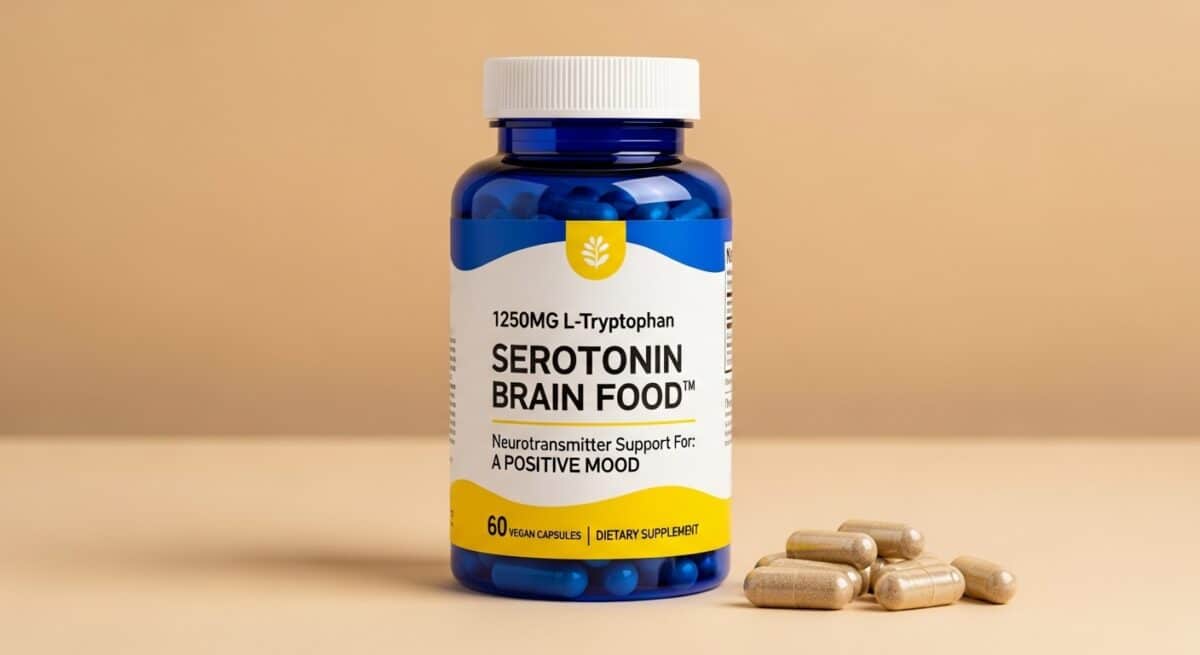Best Companies For Methylation Genetic Testing in 2025
Catherine
on
July 16, 2025

Disclaimer: Genetic information is not a substitute for medical advice, diagnosis, or treatment. Always consult a qualified healthcare provider before making changes to your health routine, especially in response to genetic test results.
Methylation is a fundamental biochemical process that affects everything from detoxification and neurotransmitter balance to DNA repair and cardiovascular health. At the heart of this process are a group of genes responsible for producing the enzymes and cofactors that regulate methylation pathways. Variants in these genes, such as MTHFR, MTRR, COMT, and others, can influence how efficiently your body performs methylation and, in turn, affect your risk for various health conditions.
In 2025, genetic testing for methylation-related genes has become increasingly popular among clinicians and wellness-focused individuals alike. These tests offer insights into how your genetic makeup might affect folate metabolism, homocysteine levels, and your body’s ability to process environmental toxins, among other functions. While not diagnostic, they can be a valuable tool in personalized health strategies, especially when paired with nutrition, lifestyle, and supplement guidance.
In this article, we highlight the top five companies in 2025 offering methylation gene testing. These companies stand out for their scientific credibility, report quality, and ability to translate complex genetic data into meaningful, actionable insights for both healthcare providers and individuals.
LifeDNA
The LifeDNA Methylation Genes report focuses on the genes of the methylation cycle, encompassing 14 genes with roles in the methionine cycle, folate cycle as well as the transsulfuration. The report offers insights into various aspects of health and wellness.
Read the full walkthrough of our Methylation genes report
Genetic variants in these genes are prevalent, found in 30-50% of the population, indicating their common occurrence in human DNA.
Genes Covered in the LifeDNA Methylation Genes Report:
- CBS: Converts homocysteine to cystathionine, aiding detoxification and glutathione production. Full analysis
- MTHFR: Converts folate into a form needed to process homocysteine and support DNA methylation. Full analysis
- COMT: Breaks down neurotransmitters like dopamine and epinephrine, influencing mood and stress. Full analysis
- MTR: Uses vitamin B12 to convert homocysteine into methionine, essential for methylation. Full analysis
- MTRR: Regenerates active B12, supporting continuous methionine production. Full analysis
- MTHFD1: Regulates folate metabolism and helps produce DNA building blocks.
- SHMT1: Links amino acid and folate metabolism by converting serine into glycine. Full analysis
- VDR: Binds vitamin D and regulates genes involved in immunity and cell growth.
- ACAT: Supports fat metabolism by converting acetyl-CoA into malonyl-CoA.
- AHCY: Maintains methylation balance by recycling homocysteine and adenosine.
- BHMT: Converts homocysteine to methionine using betaine, important for liver health.
- MAO-A: Breaks down serotonin and norepinephrine, helping regulate neurotransmitter levels. Full analysis
- NOS3: Produces nitric oxide to support vascular health and blood pressure regulation.
- MAT1A: Helps create SAMe, a critical molecule for methylation, mood, and detoxification.
LifeDNA is the Best Option
LifeDNA stands out as one of the best methylation gene tests in 2025, if we may say so ourselves! We provide a balanced coverage of 30 SNPs in 14 key genes and a strong focus on usability. The report analyzes critical variants across genes like MTHFR, COMT, CBS, MTR, MTRR, and others that impact detoxification, neurotransmitter regulation, cardiovascular health, and nutrient metabolism. By focusing on clinically relevant SNPs without overwhelming users with unnecessary data, LifeDNA strikes a smart balance between depth and clarity.
What sets LifeDNA apart is our actionable and user-friendly reports. Instead of simply listing genetic variants, we explain what we mean in the context of your well-being and offer practical guidance on diet, lifestyle, and supplementation. For example, users may receive insights into whether they need methylated B-vitamins or additional support for homocysteine clearance, making the data truly useful in everyday wellness planning.
LifeDNA also integrates your methylation profile into a broader ecosystem of wellness reports, connecting genetic insights across cognition, sleep, detoxification, mood, fitness, nutrition, and more. Combined with flexible data input options (raw data uploads or testing kits) and strong privacy controls, LifeDNA offers comprehensive yet accessible tools for anyone looking to optimize health through personalized, science-based recommendations.
SelfDecode
Best for: Consumers and practitioners seeking science-backed, personalized health insights based on methylation genetics.
SelfDecode is a trusted name in consumer genomics. They are known for their comprehensive methylation gene panel paired with robust, AI-driven health analysis. The SelfDecode methylation test evaluates multiple variants across key genes involved in methylation pathways, such as MTHFR, MTRR, COMT, CBS, AHCY, and others. Instead of just listing your genotypes, SelfDecode provides detailed explanations of what each variant means, the potential health implications, and evidence-based recommendations tailored to your genetic profile.
Users gain insights into how their genetics may impact methylation-related functions, such as detoxification, neurotransmitter balance, cardiovascular health, and nutrient metabolism. The platform connects these genetic findings to over 250 personalized health reports, including mood, cognition, inflammation, and cardiovascular function, making it especially useful for holistic health optimization.
Read our full review of SelfDecode’s genetic offerings
SelfDecode also includes:
- Actionable advice on diet, lifestyle, and supplements to support methylation pathways.
- An option to upload existing raw data from services like 23andMe or AncestryDNA, or to purchase a DNA test kit directly from SelfDecode.
- Data privacy features, with full control over how your genetic data is stored and used.
- Access to professional-grade reports that are suitable for both personal use and clinical consultations.
For users seeking a comprehensive, science-based, and interpretable methylation gene test, SelfDecode remains one of the most well-rounded options in the space.
Gene Food
Best for: Individuals focused on nutrition, lifestyle, and personalized supplement strategies rooted in methylation genetics.
Gene Food offers genetic insights with practical nutrition guidance, making it especially popular among health-conscious individuals and integrative health practitioners. Their test analyzes approximately 15 well-established SNPs across critical genes involved in the methylation cycle, including MTHFR, MTR, MTRR, COMT, CBS, AHCY, and SHMT1.
Gene Food focuses on translating genetic data into personalized diet and supplement recommendations. The report connects your genotype to meaningful health traits, such as methylation efficiency, homocysteine clearance, detoxification, and neurotransmitter balance, and explains what it could mean for your dietary choices.
Read our full review of Gene Food’s genetic tests
Key features of Gene Food’s methylation analysis include:
- Actionable nutrition guidance, including foods to prioritize or moderate based on your methylation profile (e.g., folate-rich foods).
- Recommendations for targeted supplementation, such as methylated folate (5-MTHF), B12 (methylcobalamin), or betaine (TMG), depending on your genetic variants.
- A clean and intuitive report format, ideal for consumers who want clarity without complexity.
- The ability to use an existing 23andMe or AncestryDNA raw data file, or to order a kit through MGene Food’s partnership if you don’t already have one.
Similarly to LifeDNA, Gene Food integrates your methylation profile into their broader wellness ecosystem, which includes custom meal plans, lifestyle suggestions, and tailored insights for optimizing sleep, digestion, energy, and mood.
Genova Diagnostics
The Genova Methylation Panel is a comprehensive diagnostic tool designed to assess both the genetic and functional aspects of methylation. Unlike many tests that focus solely on genetics, this panel combines plasma biomarker analysis from a blood sample with optional genetic testing via buccal swab, offering a dual-layered view of how well the body’s methylation processes are functioning in real time. Results are typically available within 14 days and must be ordered by a licensed healthcare provider.
Functionally, the test measures key methylation-related metabolites such as S-adenosylmethionine (SAM), S-adenosylhomocysteine (SAH), homocysteine, cystathionine, glutathione, choline, and betaine. These biomarkers provide insight into methylation efficiency, oxidative stress, detoxification capacity, and transsulfuration balance. Genetically, the panel evaluates common variants in genes such as MTHFR, MTR, MTRR, COMT, CBS, AHCY, BHMT, SHMT1, GNMT, and MAT1A, all of which play critical roles in regulating methylation cycles and maintaining healthy homocysteine levels.
The report includes a summary section, detailed pathway diagrams, and individualized result interpretations. Healthcare providers can find the relevant information needed to develop targeted, evidence-based interventions.
Xcode Life
Best for: Individuals with existing raw DNA data (e.g., from 23andMe, AncestryDNA) looking for a convenient, cost-effective, and science-informed methylation gene report.
Xcode Life offers a specialized Methylation Genes Report that analyzes key single-nucleotide polymorphisms (SNPs) in genes involved in the body’s methylation pathways. Xcode Life works by allowing users to upload raw DNA data from popular genetic testing platforms like 23andMe, AncestryDNA, or MyHeritage, making it ideal for those who already have their genotyping data.
The report covers 15+ genes integral to the methylation cycle, including:
- MTHFR
- COMT
- MTR
- MTRR
- AHCY
- CBS
- BHMT
- SHMT1
- VDR, among others
These genes are associated with crucial physiological processes like homocysteine metabolism, neurotransmitter regulation, detoxification, cardiovascular function, and mood balance. Variants in these genes may affect how well your body performs methylation.
Takeaway
As awareness of personalized health continues to grow, methylation gene testing is emerging as a key tool for individuals and clinicians looking to optimize wellness through a deeper understanding of genetics. Whether it’s supporting detoxification, enhancing mood balance, improving cardiovascular health, or simply making smarter dietary and supplement choices, these tests offer valuable insights into how your body processes and regulates some of its most fundamental biological pathways.
The companies highlighted in this article represent some of the most trusted and innovative options available in 2025. From comprehensive panels with functional insights to affordable reports based on existing DNA data, there’s a solution for every level of need and interest. While methylation gene tests are not diagnostic, when interpreted within the right context and paired with professional guidance, they can be a powerful addition to your long-term health strategy.
















